
This blog is your one-stop guide to the most renowned religious landmarks and captivating festivals across the globe. Embark on a virtual pilgrimage to discover the architectural wonders, sacred spaces, and cultural experiences that ignite faith and inspire millions.
Monday, December 31, 2007
HAPPY NEW YEAR
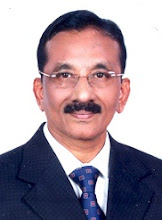 Senior Business Consultant at Finmaag Investment Consultants FZC, with a background in law, bringing a unique legal perspective to investment strategy.
Senior Business Consultant at Finmaag Investment Consultants FZC, with a background in law, bringing a unique legal perspective to investment strategy.
Sunday, October 14, 2007
Festivals of Kerala - Sabarimala Festival

Sabarimala is a renowned pilgrim centre atop the rugged hills of the
There are two main rituals called the Mandal Puja and the Makara Sankranti Puja, which is celebrated from November to mid-January in Kerala during which time, the devotees perform austerities and penance.
The Pilgrimage
Devotees undergo rigorous penance and austere living before starting on the pilgrimage. Regardless of caste, creed and colour they wear black dhoties and carry on their heads, bundles containing traditional offerings like coconuts filled with ghee, camphor and rice.
The temple dome is covered with gold and the devotees break the coconuts before climbing the steps. Among the pilgrims, there are a few who are undertaking the pilgrimage for the first time while ther are a few who have been doing so for the past many years.
The first timers are known as 'Kanni Swamis' and the leader of the group is known as 'Guru Swami' or the lead person of a team who is incharge of all the rituals.
Devotees take a ritual bath while climbing up the hill in the holy river Pamba, which absolves one's sins. En route at Erumeli, in a supreme instance of communal harmony, they pay obeisance at the shrine of Vavar, a Muslim deity believed to be a close ally of Lord Ayyappa.
To ease the ardour of the long trek through the forests to the temple at the peak of the Sabari Hills, devotees constantly chant the name of the holy one. No women in the fertility age group are allowed into the precincts of the shrine of the Lord who is considered to be an Eternal Bachelor.
Makaravillakku At Sabarimala Festival
FestivalMakara Vilakku Pooja is a seven-day festival conducted annually in the famous
Importance of Sabarimala Shrine
What makes the shrine so much more interesting is the rugged terrain on which it is located. The spirit of the thousands of devotees must be saluted who walk this terrain on foot as no other means of transport function in the rough stretches of
Ceremonies and Celebrations during Makar Villaku
One very important ceremony of Makara Villaku is the bringing of deity's jewellery, Thirivabharanam from the
The jewelery consists of a diamond crown, gold bracelets and necklaces studded with precious gems, Lord's swords, silver arrows and gold images of elephant, horse and leopard. Thousands gather for that dazzling glimpse of a fully ornamented deity.
The other spectacular event is the appearance of 'Makarajyothi' in the north-east horizon on Ponnambala Medu. Chants of 'Swamiye Saranam Ayyappa' reverberate as the devotees turn ecstatic on the strange occurrence.
Makara Vilakku poojas and ceremonies are performed on the 'Manimandapa' (sacred platform) near the Devi shrine where a picture of Sastha riding on a leopard's back is depicted. After the pooja, Malikappurath Amma is mounted on an elephant's back and carried in a procession comprising of torchbearers, drummers, buglers etc. to Pathinettampadi. The procession halts for sometime and shouts a call for Vettavili (hunting) and returns after circumabulating the main temple.
Festivities continue for seven days and culminate with 'Guruthi'. In this offerings are made to the Lord. The temple is vacated after Guruthi. Nobody remains inside as a tradition.
On the last day of the Makara Vilakku celebrations, which is Makaram 5th morning, a 'Ganapati Homam' is conducted at the temple. Later the Thiruvabharanams are removed. After performing some more rituals the procession makes its return journey along with the Thiruvabharanam.
 Senior Business Consultant at Finmaag Investment Consultants FZC, with a background in law, bringing a unique legal perspective to investment strategy.
Senior Business Consultant at Finmaag Investment Consultants FZC, with a background in law, bringing a unique legal perspective to investment strategy.
Tuesday, July 24, 2007
Shopping in Isle of Man

The main shopping area on the Island is Strand Street, located in the centre of the Island's capital Douglas. Here you will find High Street names such as Marks & Spencer, WHSmith, Boots and Woolworths as well as an abundance of local shops. The street is home to two modern shopping centres,
The Strand and Tower House, which is located a little further up the street on Castle Street.
A number of gift shops around the Island provide a wide range of Manx souvenirs and quality gifts, from paintings to a miniature Laxey Wheel. Items such as the world famous Manx kippers, printed TT shirts, loghtan sheep products and special Manx souvenirs can be purchased online.There are familiar High Street names, local speciality stores, the Woollen Mills at Laxey, heritage shops, excellent new facilities in Douglas and many other traditional shops across the Island.
‘The superb Tynwald Mill Craft Centre at St John's is one of several outlets selling Manx rural craft products made right here on the Isle of Man The Story of Mann ‘Heritage Shops’ have established an international reputation for their unique range of unusual and practical gifts and souvenirs - designed to suit all ages and pockets. ‘Manxness’ is the theme and the Island’s Celtic past is clearly evident in the styles of the Manx artists and crafts people whose popular work forms the backbone of attractive displays including jewellery, ceramics and woollen goods.
Heritage Shops’ can also boast a comprehensive literature section covering all aspects of Manx heritage. Story of Mann Site guidebooks, maps and Manx history books are among the many publications available to anyone wishing to explore the Island and things Manx in detail. A large part of the ‘Heritage Shops’ range of goods have been designed and produced exclusively for Manx National Heritage, and are not available to purchase elsewhere on the Island.
As a basic guide, Douglas is the main shopping centre and the location of UK retail chains; Peel is a good place to hunt for all things antiquarian; Ramsey and Port Erin have a little bit of everything; the Tynwald Mills complex at St Johns is a smart, 'leisurely' outdoor shopping centre; Castletown has many small speciality shops; and Laxey is home to traditional craftsmen working in metal, wood, leather, textiles and pipe-making.
For bargain hunters there are plenty of craft fairs and small weekend car boot sales and, during the summer, weekly outdoor markets in Peel, Ramsey and CastletownDouglas, the capital, supports a wide range of retailers from some of the biggest chains in the UK to locally owned businesses that offer excellent quality and service in their stores.
The town centres around the Island are generally compact and easy to shop in, predominantly filled with good Manx-owned retail businesses. The main shopping towns are Douglas in the east, Castletown and Port Erin in the south, Peel in the west and Ramsey in the north.
The Tynwald Mills complex, on the way to Peel, is an excellent example of a total quality approach to range, product and choice, backed up by high standards of customer service, a unique selection of mainly one off stores, creating a destination shopping and leisure experience built around the Mill Shop, which features a selection of the UK's top mid range fashion brands for men and women.
The major retail sector, food, includes the supermarkets and numerous locally run "convenience" stores, serving the day to day needs of the population. This sector is backed up by butchers, bakers, cafes, pubs, off-licences, newsagents and post offices
 Senior Business Consultant at Finmaag Investment Consultants FZC, with a background in law, bringing a unique legal perspective to investment strategy.
Senior Business Consultant at Finmaag Investment Consultants FZC, with a background in law, bringing a unique legal perspective to investment strategy.
Tuesday, April 03, 2007
Visu - Festival of Kerala - Malayalam New Year Day
 Vishu is a festival held in the state of Kerala (and adjoining areas of Tamil Nadu) in
Vishu is a festival held in the state of Kerala (and adjoining areas of Tamil Nadu) in The festival is marked with offerings to the divine called Vishukkani. The offerings consist of a ritual arrangement in the puja room of auspicious articles like raw rice, fresh linen, golden cucumber, betel leaves, arecanut, metal mirror, the yellow flowers konna (Cassia fistula), and a holy text and coins, in a bell metal vessel called uruli. A lighted bell metal lamp called nilavilakku is also placed alongside. This arrangement is completed the previous night. On the day of Vishu, the custom is to wake up at dawn and go to the puja room with the eyes closed so that the Vishukkani is the first thing one sees.Since the occasion marks the beginning of Malayalam New Year, it is also considered auspecious to read verses from Hindu Holy book "Ramayanam" after seeing the "Vishukkani". It is also believed that the page of the "Ramayan" which randomly opens up by you will have the narrations which will have a bearing on your life in the coming year. Devotees also throng the well-known Srikrishna temple "Guruvayur" to have a "Vishukkani Darshan" on the early hours of "Vishu" day.
bell metal vessel called uruli. A lighted bell metal lamp called nilavilakku is also placed alongside. This arrangement is completed the previous night. On the day of Vishu, the custom is to wake up at dawn and go to the puja room with the eyes closed so that the Vishukkani is the first thing one sees.Since the occasion marks the beginning of Malayalam New Year, it is also considered auspecious to read verses from Hindu Holy book "Ramayanam" after seeing the "Vishukkani". It is also believed that the page of the "Ramayan" which randomly opens up by you will have the narrations which will have a bearing on your life in the coming year. Devotees also throng the well-known Srikrishna temple "Guruvayur" to have a "Vishukkani Darshan" on the early hours of "Vishu" day.
"Vishu" is celebrated with more fanfare and vigour in
 Senior Business Consultant at Finmaag Investment Consultants FZC, with a background in law, bringing a unique legal perspective to investment strategy.
Senior Business Consultant at Finmaag Investment Consultants FZC, with a background in law, bringing a unique legal perspective to investment strategy.
Thursday, March 01, 2007
Beaches of India -- Beaches in Kerala
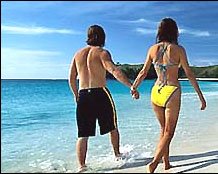
Kovalam Beach - small village along the shoreline, fabulous beaches, most popular is the Lighthouse Beach, the northern most Samudra beach, least affected.
Marari Beach - one of the local fishing villages, completely new to the holidaymaker, endless miles of superb sand beaches backed by swaying palms, virgin territory, local charm and traditional Kerala
B Kumarakom each - cluster of little islands on the Vembanad Lake, part of the Kuttanad region. The bird sanctuary spread across 14 acres is a favourite haunt of migratory birds and an ornithologist's paradise. Birds include Egrets, darters, herons, teal, waterfowl, cuckoo, wild duck and migratory birds like the Siberian storks. The best way to watch the birds of the Kumarakom sanctuary is a boat trip.
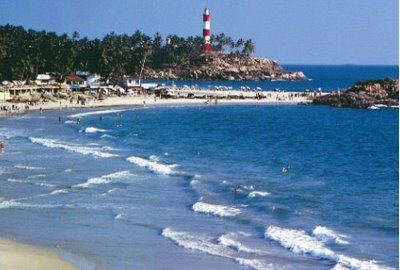
Alappuzha Beach - a popular hangout and relaxation spot, around 140 years old pier that extends in to the sea, lagoons, vast lakes and numerous fresh water rivers, Alappuzha is a natural wonderland.
Beypore Beach - prominent ports and fishing harbours of ancient Kerala, also known for its ancient ship building industry.
Varkala Beach - the most popular beach resorts in Kerala, mineral water springs with medicinal properties, also an important Hindu pilgrimage centre.
Fort Kochi Beach - historic fort, leisurely walk through the lanes of the city to learn about eventful colonial history and European regimes who ruled it.
Kappad Beach in Kerala - Vasco da Gama landed on its shores on 27th May 1498 with 170 men in three vessels. A pillar with inscription "Vasco Da Gama landed here, Kappakkadavau in the year 1498" stands on the beach. The beach here is very calm with a stretch of rocks projecting into the sea.
Dharmadam Island - beautiful beach island, coconut palms, green bushes, breathtaking sight. Permission is required to enter this privately owned island.
Ezhimala Beach - a picturesque site with a hilly backdrop, carved Stone Pillars, an ancient Burial chamber and an ancie
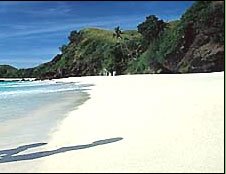 nt Cave can be seen at the foot of the hills, famous for medicinal herbs.
nt Cave can be seen at the foot of the hills, famous for medicinal herbs.Mopila Bay - natural fishing harbour with quite a modernised fishing harbour look, built with assistance under the Indo-Norwegian pact, ruined fort and temple.
Muzhappilangad Beach - one of the longest beaches in Kerala, also the only drive-in beach in India.
Pathiramanal Beach - island beach on the Backwaters, a favourite natural hub of hundreds of rare migratory birds that reside over here from different parts of the land.
Payyambalam Beach - beautiful beach sites, surfing in calm and peaceful waters.
Sankhumugham Beach - breathtaking sunset, a favourite haunt of sunset watchers.
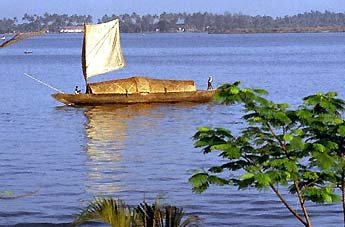
Tanur Beach - coastal fishing town believed to be visited by Francis Xavier in the year 1546 AD.
Thangassery Beach - a seaside village of historic importance, ruins of an old Portuguese Fort and churches built in the 18th century. 144 feet high Thangaserry Lighthouse open to visitors from 1530-1730 hours every day.
Thirumullavaram Beach - beautiful beach filled with coconut palms, ideal for an early morning walk.
 Senior Business Consultant at Finmaag Investment Consultants FZC, with a background in law, bringing a unique legal perspective to investment strategy.
Senior Business Consultant at Finmaag Investment Consultants FZC, with a background in law, bringing a unique legal perspective to investment strategy.
Monday, February 26, 2007
Complete List of 79th Academy Awards -Oscar Winners

Best Motion Picture: "The Departed"
Lead Actor: Forest Whitaker, "The Last King of Scotland"
Lead Actress: Helen Mirren, "The Queen"
Supporting Actor: Alan Arkin, "Little Miss Sunshine"
Supporting Actress: Jennifer Hudson, "Dreamgirls"
Directing: Martin Scorsese, "The Departed"

Foreign Language Film: "The Lives of Others," Germany
Adapted Screenplay: William Monahan, "The Departed"
Original Screenplay: Michael Arndt, "Little Miss Sunshine"
Animated Feature Film: "Happy Feet"
Art Direction: "Pan's Labyrinth"
Cinematography: "Pan's Labyrinth"
Sound Mixing: "Dreamgirls"

Sound Editing: "Letters From Iwo Jima"
Original Score: "Babel," Gustavo Santaolalla
Original Song: "I Need to Wake Up" from "An Inconvenient Truth," Melissa Etheridge
Costume: "Marie Antoinette"
Documentary Feature: "An Inconvenient Truth"
Documentary Short Subject: "The Blood of Yingzhou District"
Film Editing: "The Departed"
Makeup: "Pan's Labyrinth"
Animated Short Film: "The Danish Poet"
Live Action Short Film: "West Bank Story"
Visual Effects: "Pirates of the Caribbean: Dead Man's Chest"
___
Jean Hersholt Award (Oscar statuette): Sherry Lansing.
Honorary Academy Award (Oscar statuette): Ennio Morricone.
 Senior Business Consultant at Finmaag Investment Consultants FZC, with a background in law, bringing a unique legal perspective to investment strategy.
Senior Business Consultant at Finmaag Investment Consultants FZC, with a background in law, bringing a unique legal perspective to investment strategy.
Saturday, February 03, 2007
Curacao-Vibrant Island Country
eventsTraditionally, the Carnival began as the religious practice of the Catholics called ‘Carne Levale’ meaning ‘Abstinence from Meat for Le
 nt’ in Curacao. The practice continued in the island even in the 19th century when the people organized the masquerade parties and marches in the private clubs. But the Curacao Carnival gained popularity only after 1969. It has now become one of the largest and longest carnival spectacles in the Caribbean Islands, beginning in early January and concluding by end of February and sometimes extending to even March. The eight weeks of festivity this year will begin in January 2007 at Willemstad.
nt’ in Curacao. The practice continued in the island even in the 19th century when the people organized the masquerade parties and marches in the private clubs. But the Curacao Carnival gained popularity only after 1969. It has now become one of the largest and longest carnival spectacles in the Caribbean Islands, beginning in early January and concluding by end of February and sometimes extending to even March. The eight weeks of festivity this year will begin in January 2007 at Willemstad.Calendar of events-Curacao
Curaçao has a full calendar of festivities that delight local residents as well as visitors. Major holidays, such as Carnival and Christmas, spread a decidedly festive atmosphere over the entire Island. Banks and other businesses are decked out with streamers, balloons and other decorations befitting the occasion.
History of Curacao
Curacao is a large protected natural port that was mapped before 16th century and in due course became a prominent hub of commercial activities. This island is the place of origin of Papiamentu, the language of the ABC Islands spoken as far as the Netherlands Antilles Islands of St. Eustatius, Saba and St. Maarten.
Flora and Fauna of Curacao
Curacao is a sub-tropical & semi-arid island in Netherlands Antilles & does not support much of greenery and animal life. The flora and fauna found in Curacao can survive these weather conditions.
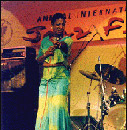
Culture of Curacao
Although Curacao is the member of the Netherlands Antilles and has governmental ties with the Kingdom of the Netherlands, yet the 130,000 people of the island are more attached to African and Caribbean region culturally through language, music and dance.
Cuisine of Curacao
The population of Curacao comprises of more than 50 nationalities. Therefore, the cuisine of this island is bound to have such a vast diversity in its food. The immigrants to Curacao have brought with them their own culinary styles that have been incorporated into Curacao’s cuisine and have got the local flavor with the passage of time.
Forts in Curacao
Curaçao has a full calendar of festivities that delight local residents as well as visitors. Major holidays, such as Carnival and Christmas, spread a decidedly festive atmosphere over the entire Island
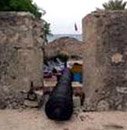 . Banks and other businesses are decked out with streamers, balloons and other decorations befitting the occasion.
. Banks and other businesses are decked out with streamers, balloons and other decorations befitting the occasion.Museums in Curacao
Curacao is rich in history and culture. There are numerous museums that tell the history and lore of the lovely island. Museums housed in ancient buildings display interesting artifacts that reflect Curacao's culture & history. Here is a list of some of the museums in Curacao
Attractions in Curacao
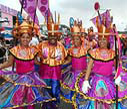
The island of Curacao is dotted with intriguing caves, 18th century forts and monuments which are interesting architectural showpieces as well as popular tourist attractions. Also you may come across on your travels, centuries old stalagmites and stalactites that are still in a state of evolution.
Beaches in Curacao
The long and beautiful coastline of Curacao is lined with nearly 30 public and private beaches. The b
 eaches range from the intimate rocky coves to long stretches of lively beaches. The sheltered southwestern coast with calm and crystal clear waters features almost all the swimming beaches of the island.
eaches range from the intimate rocky coves to long stretches of lively beaches. The sheltered southwestern coast with calm and crystal clear waters features almost all the swimming beaches of the island.» Click here to read more
 Senior Business Consultant at Finmaag Investment Consultants FZC, with a background in law, bringing a unique legal perspective to investment strategy.
Senior Business Consultant at Finmaag Investment Consultants FZC, with a background in law, bringing a unique legal perspective to investment strategy.